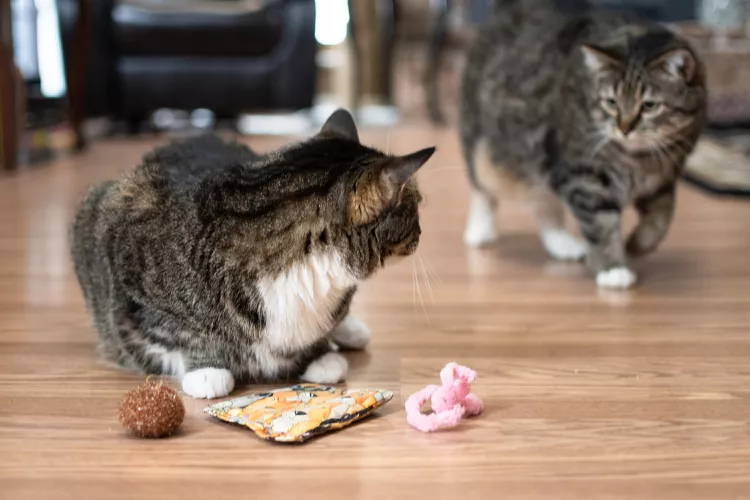
Cats will wrestle and play with each other and sometimes even get a little rough, but that can be normal cat behavior. Cats who live together and normally get along will exhibit non-painful ear biting, grabbing, and chasing as a part of their playful activities.
These behaviors develop when a cat is a very young kitten and are understood by other well-socialized cats. Cats who are not well-socialized may not know how to communicate with other cats, or sometimes dynamics arise within a multi-cat household and alter how even the most well-socialized cats interact with each other. Cats who start to show signs of dominance or anxiety can be challenging to work with, especially in multi-cat households.
Cats who are more dominant than other cats will display some specific behaviors depending on the situation they are in. Dominance in a cat can appear at a young age but it will become especially apparent once it matures or is about 2 to 4 years of age. This is the age cats typically will test their boundaries with other cats to establish a hierarchy.
Simple dominance will be exhibited by a cat by marking or spraying urine on territory, stealing and hoarding toys, rubbing its face on items it wants to claim as its own, claiming specific areas to sleep, pushing other cats away from the food bowl, and/or staring at or physically intimidating other cats. Cats who live alone may exhibit some of these behaviors too. A dominant cat that lives with other cats will have more obvious behaviors.
Dominant cats may attempt to establish their dominance in a multiple-cat household by hissing, hitting, and growling. They may also urinate outside of the litter box in areas that the other cats frequent, push other cats out of the food bowl until they are done eating, and make the other cats feel threatened. Dominant cats may also target sick cats in the house. Cats can sense and smell changes in other cats, often before the owner even knows about it. Therefore, they may be more aggressive and act out for no apparent reason towards a cat that isn't feeling well.
Stress can also trigger a cat to act out. For example, displaced aggression is often observed in multiple cat households when an indoor cat sees an outdoor cat through a window and takes out its anxiety on a cat in the home. Other major household changes may also cause this type of behavior, including the introduction of new pets or people, moving to a new home, and construction in the home.
Hierarchy can change with the introduction of a new cat or if you have several cats living together. Some cats will act dominantly in one room with one cat and suddenly switch roles in another room with another cat. Mannerisms from the dominant cat, such as excessive licking, standing on, or sitting on the other cat may be displayed, and swatting and even biting may occur.
While cats can be solitary animals, social hierarchies are also normal when many cats live in the same small area. Some cats are considered more dominant or more submissive, and this can be within the normal spectrum of cat behaviors. Additionally, socialization for kittens is an important part of learning how to navigate these interactions with other cats.
Kittens who don't have an opportunity to play and interact with litter mates or other cats may exhibit more extreme behaviors because they didn't learn from other cats. Feral kittens, kittens who need to fight for their food, and kittens who were bottle-fed and raised without other cats may also be more at risk for having undesirable behaviors. Finally, some cats can experience a behavior change related to stress or a medical problem, which can cause them to exhibit behaviors that are out of character for them.
Most people aren't able to oversee every life stage of their cats so it's hard to make sure the first eight weeks of a kitten's life don't contribute to or enforce these behaviors. But there are things a cat owner can do to decrease excessively dominant behaviors in their kitten or adult cat. Be sure to discourage overly aggressive play and don't allow your cat to bite or grab you. Redirect them to a toy they can bite or grab in place of using you or another cat for this purpose.
If you have multiple cats, be careful that you don't give one cat more attention than another, as this could lead to competition and/or jealousy. Feeding multiple cats in separate locations with separate bowls is also encouraged to decrease dominant behavior caused by competition for food. Additionally, it is important to make sure you have enough litter boxes for all of your cats to prevent them from competing or stalking each other in the litter box. This can lead to cats urinating outside of the litter box and/or marking. The general rule is to have at least one more litter box than you have cats and to ensure they are in private, quiet locations.
You should consult your veterinarian if you notice a sudden behavior change in one of your cats or escalating aggression toward cats or people. Some underlying medical conditions could lead to these changes and your veterinarian can help determine if there is a health problem. If the problem is strictly behavioral, working with your veterinarian as well as a trainer can be the best way to help your cat and reestablish harmony in your home.
Positively reinforcing good behaviors is better than trying to punish a cat. When your cats are spending time together, be sure to give them treats and pet them. Play with them together while giving them treats and verbally praise them if they are getting along well. This will reinforce the type of behaviors you want to see in your cats, even if one of them is more dominant or pushy than the other.

Exploring the Different Types of Pet-Friendly Beaches
Are you looking for pet-friendly beaches? Learn about the different types of pet-friendly beaches, their locations, and tips for visiting them with your pet.
Exploring Pet-Friendly Wineries: Types, Locations, and More
Discover the different types of pet-friendly wineries, where to find them, and what to expect when you visit. Learn more with The Spruce Pets.
Why Is My Dog’s Eye Swollen?
If your dog's eye is swollen, she may need veterinary attention. The inflammation could be caused by allergies, an injury, or even a tumor.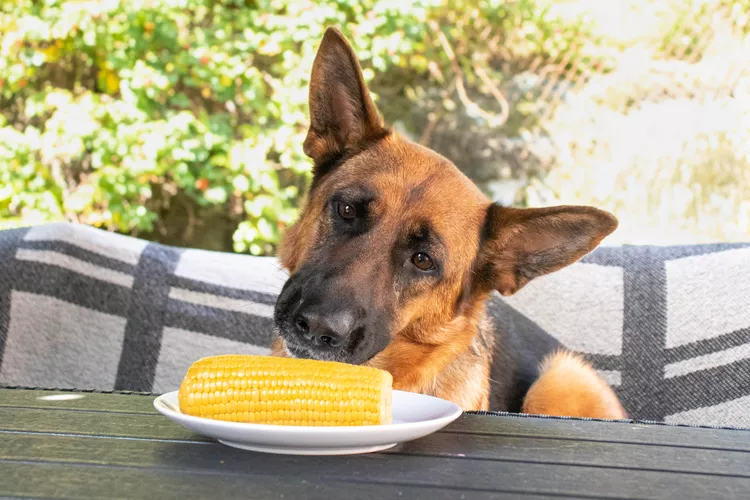
Can Dogs Eat Corn on the Cob?
Dogs love chewing on corn cobs, but this can cause serious harm. Learn about the dangers of corn cobs and find out what to do if your dog eats one.
Can Dogs Eat Papaya? What to Know About Sharing This Tropical Fruit With Your Pup
Papaya is safe for dogs in moderation, and it can even provide some nutritional value for them. However, too much can cause digestive upset, and it's not suitable to share with dogs with certain health conditions.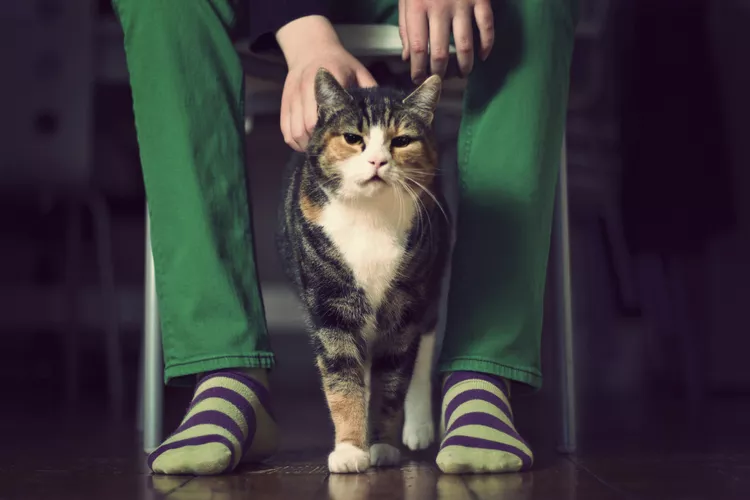
65 Irish Cat Names
Irish cat names can pay homage to historical places, local cuisine, famous Irish actors and musicians, or other wonderful aspects of the Emerald Isle.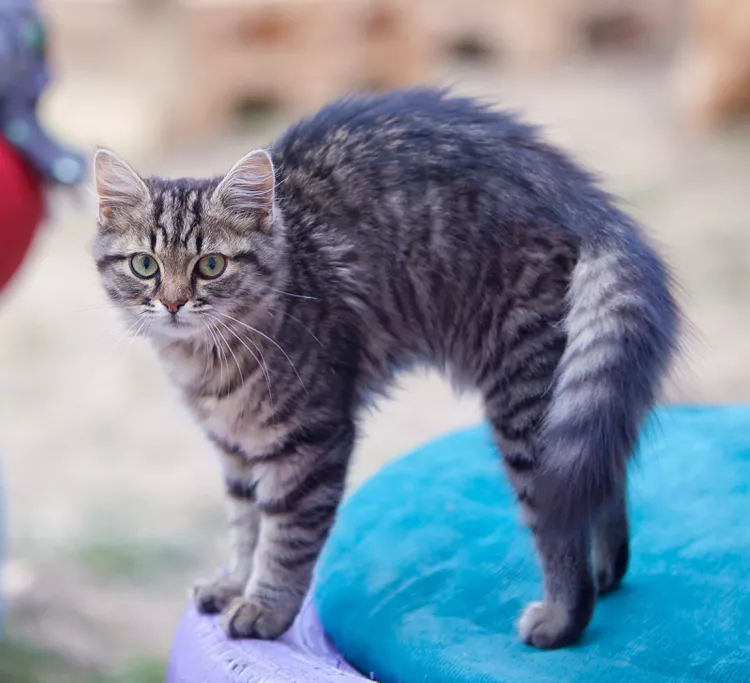
Feline Hyperesthesia Syndrome (FHS) in Cats
Rippling skin is more than dermal sensitivity in cats. It can be a sign of Feline Hyperesthesia Syndrome. Learn the causes, treatment, and prevention.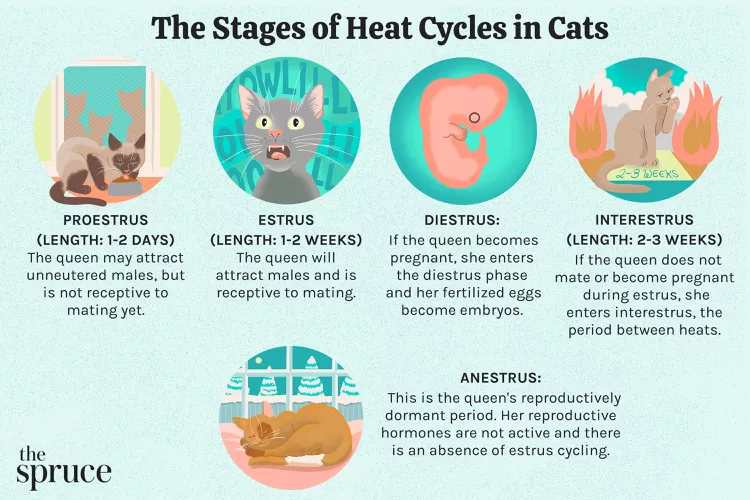
How Long Are Cats in Heat?
How long are cats in heat? Learn about the heat cycles of cats, also called estrus, as well as the reasons you should spay your cat.
Can Dogs Eat Raw Chicken Feet?
What are the potential health benefits of chicken feet for dogs? What are the risks?
Is Eucalyptus Safe for Cats?
Many products containing eucalyptus are not safe for cats, and it is important to be aware of the risks to your cat.
What You Need to Know About Homemade Cat Food
If you want to cook for your cat, make sure to read about the risks associated with homemade diets for cats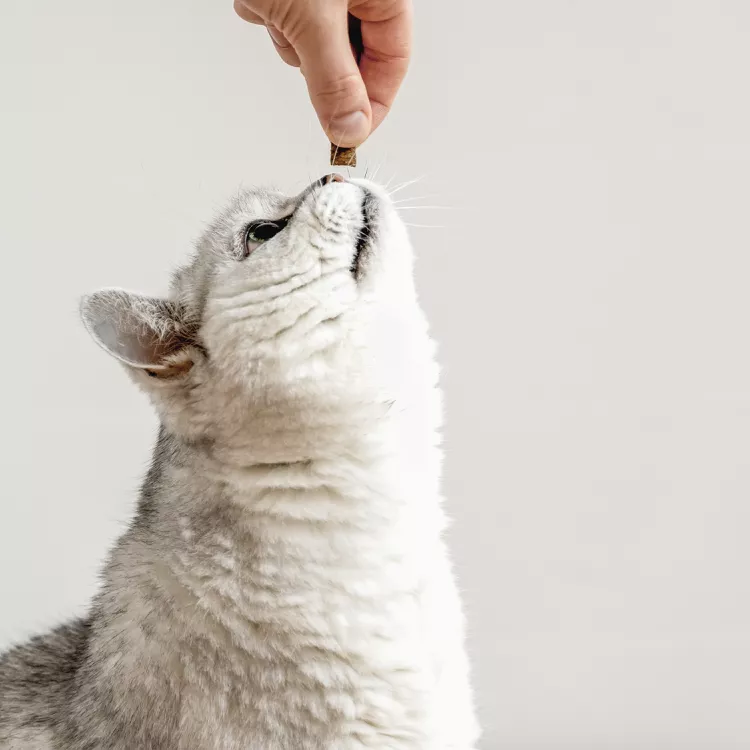
Can Cats Eat Peanut Butter?
Peanut butter is not toxic to cats, but it might not be the best choice of treat for them.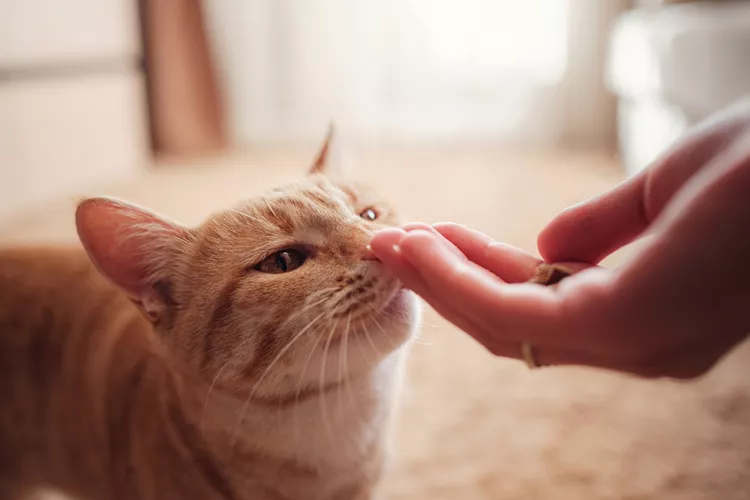
Can Cats Eat Cheese?
Can cats eat cheese? Is it healthy for them? How much can they eat and what should you do if you fear your cat has eaten too much cheese?
8 Flat-Faced Cats with the Cutest Smooshed Faces
These flat-faced cat breeds have a distinct and adorable appearance. Learn about their origins and traits, and the potential health risks tied to their unique facial structures.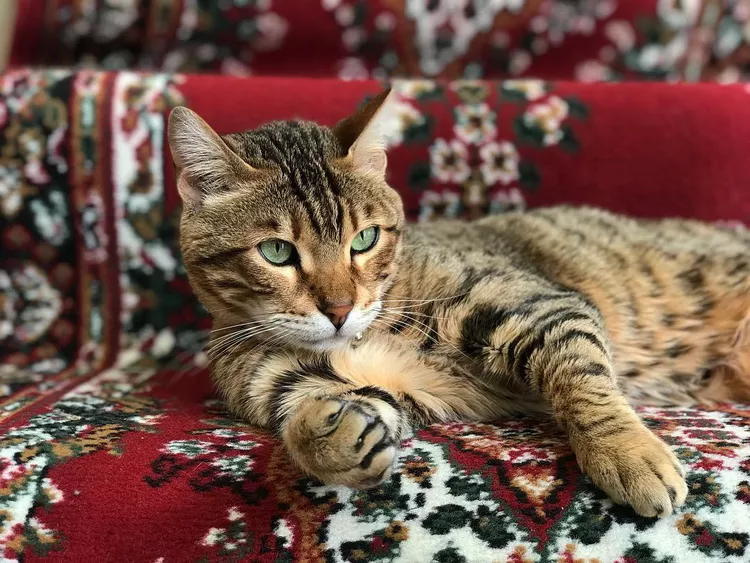
Pictures and Facts About Bengal Cats and Kittens
Bengal cats are a cross between wild cats and domestic cats. Learn more about what they look like and pictures of this beautiful spotted breed.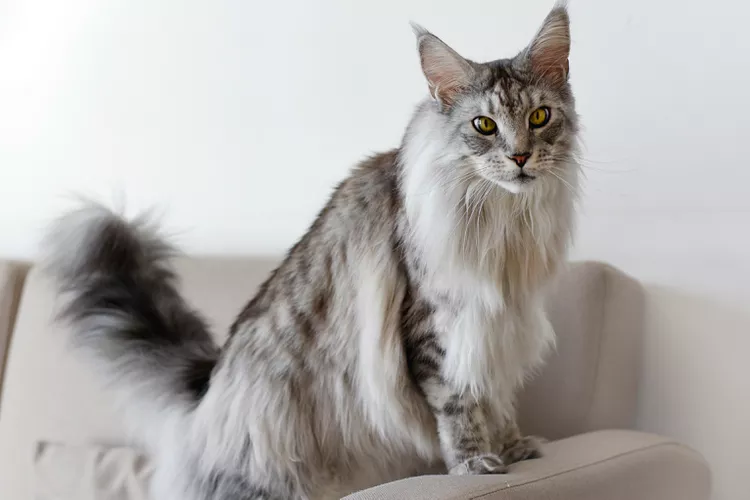
Top 10 Big House Cats
Larger cat breeds, like Maine coons and savannahs, deserve just as much love as their petite counterparts. These big house cats tip the scales.
Cairn Terrier: Dog Breed Characteristics & Care
The cairn terrier is a spunky, affectionate, and intelligent dog from Scotland. The breed became famous when one played Toto in The Wizard of Oz. Learn about the temperament, history, health, and care needs of the cairn terrier dog breed.
Reasons Why Dogs Grind Their Teeth
Some dogs grind their teeth. Learn why dogs grind their teeth and if it can be harmful. Find out what to do about teeth grinding in dogs.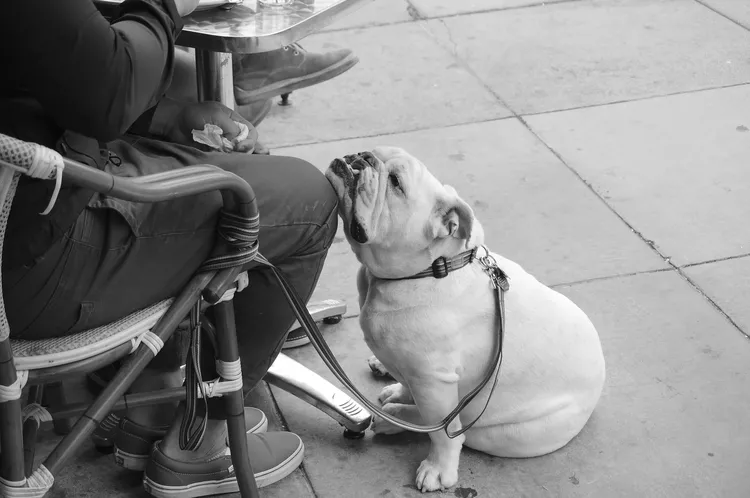
This Is Why Some Dogs Lean on People
Certain dogs really love leaning on their humans. What does this mean? Find out why dogs lean on people and if this is ever a problem.
Can Dogs Get Depression? How to Help Your Sad Dog
Can dogs get depression? Learn about the signs of depression in dogs and find out how to help your sad dog.